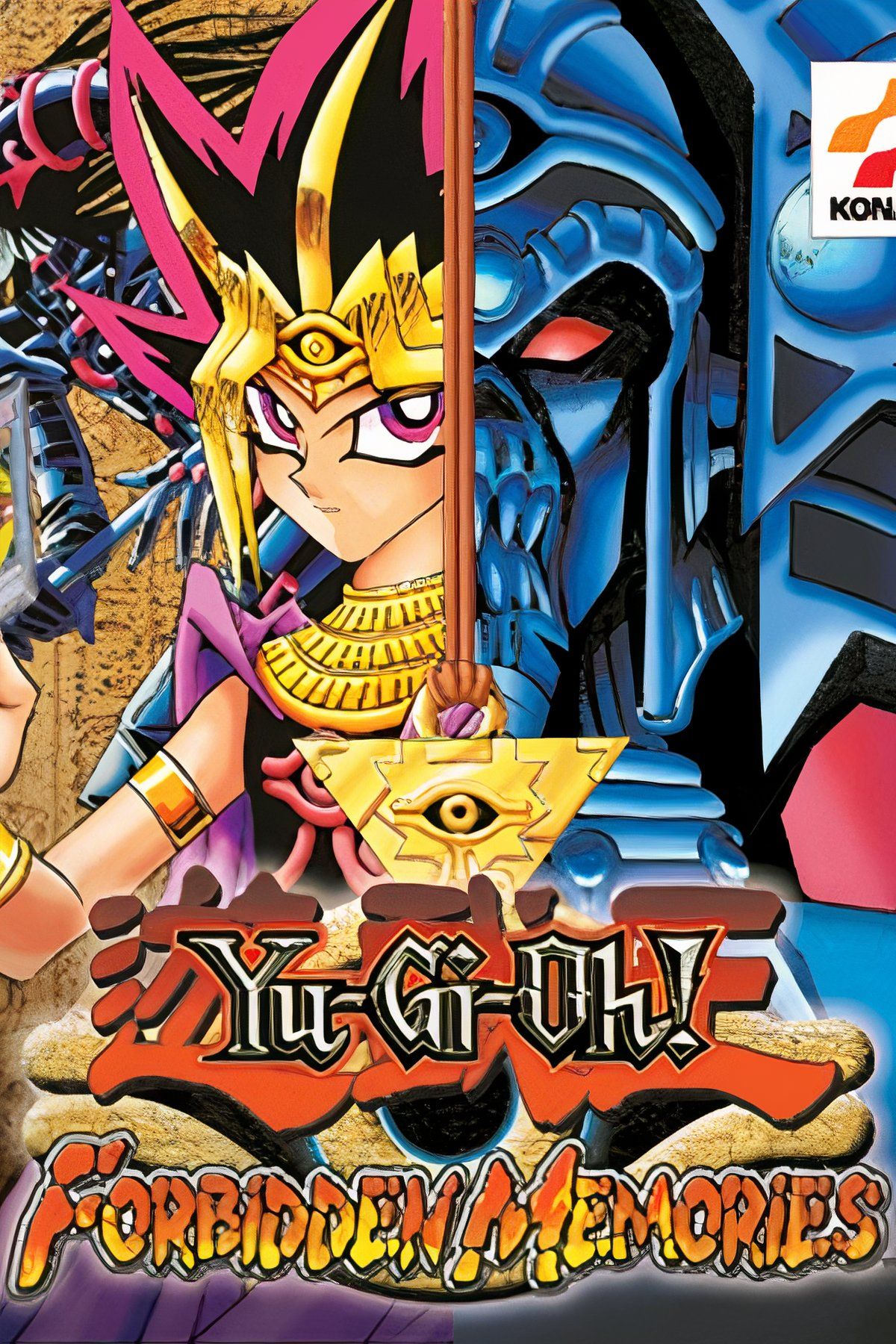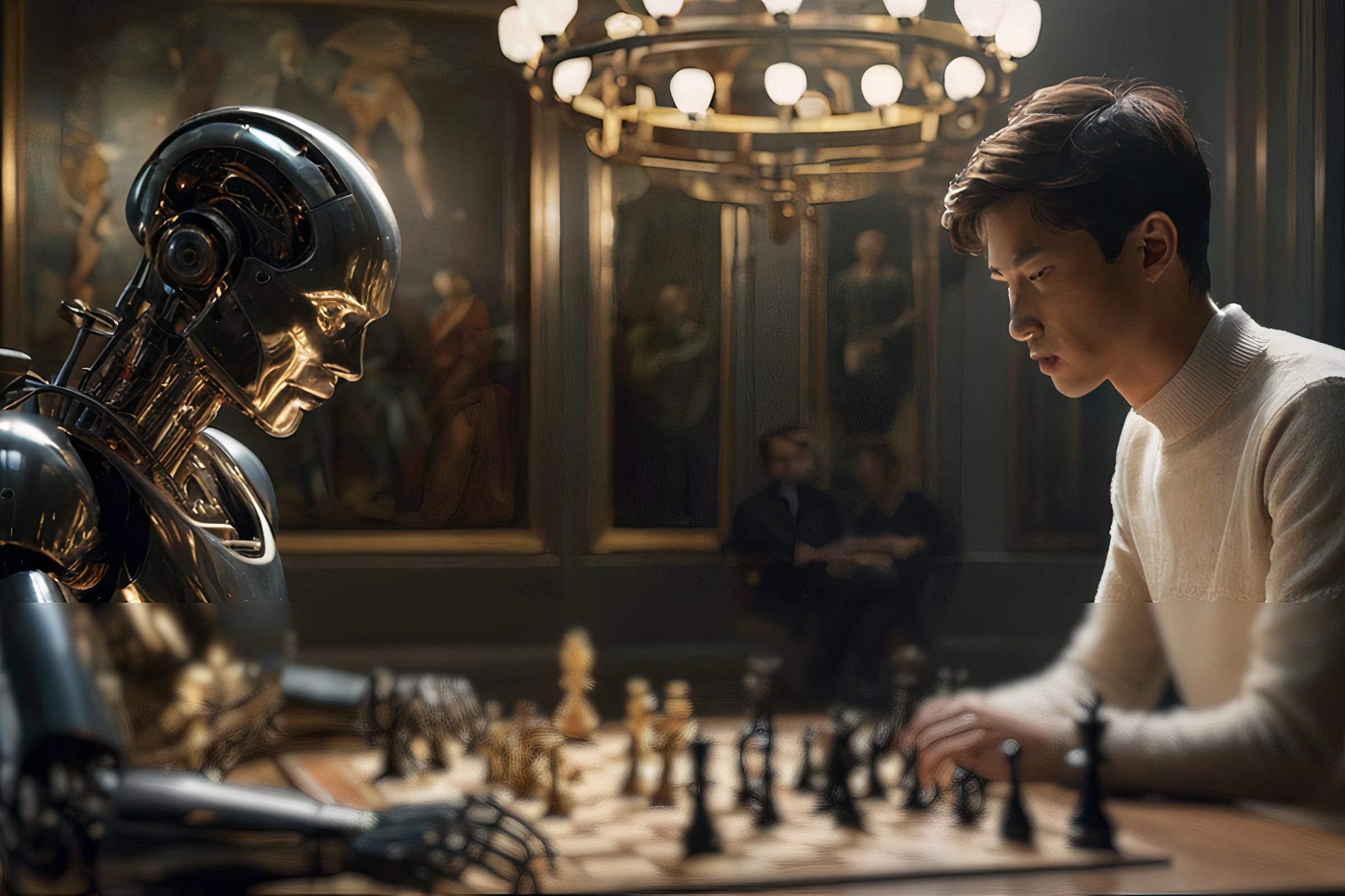I think it’s safe to say that growing up, all of us had at least one game that really tested our mettle. As someone who was enamored with the Yu-Gi-Oh! card game when it debuted, there was a PlayStation game I had to have, and it would be one that truly tested my mental fortitude.
Yu-Gi-Oh! Forbidden Memories is an experience that will not only try your patience but help you determine if you’re a masochist.

Yu-Gi-Oh! Forbidden Memories

- Released
-
December 9, 1999
- ESRB
-
E
- Developer(s)
-
Konami
- Publisher(s)
-
Konami
- Multiplayer
-
Local Multiplayer
It Doesn’t Play Anything Like the Actual Card Game
One would expect a game titled Yu-Gi-Oh! Forbidden Memories to play just like the real-life card game, or at the very least, quite similarly. It may surprise you to learn that isn’t the case. Konami had big plans for Yu-Gi-Oh!, and this game was in development before the official rules were solidified. There are aspects that align between the two, but your knowledge of the official card game won’t help you while playing Yu-Gi-Oh! Forbidden Memories.
For example, monsters in Yu-Gi-Oh! have stars under their names, officially called their Rank, that determines a number of things. The most obvious is whether you need to sacrifice other monsters to play them, but Yu-Gi-Oh! Forbidden Memories completely omits rules regarding sacrifices. Spells and fusing cards are also mechanically different, and a completely new feature called Cosmic Alignments only makes things more confusing.
No In-Game Tutorials for Critical Game Mechanics
Thankfully, like many games of that time, Yu-Gi-Oh! Forbidden Memories has a lengthy game manual you can consult (something I miss doing, even if we don’t need them anymore). I’ll give credit where it’s due and admit it’s quite thorough explaining how everything works for the most part. I say that because what it doesn’t tell you is how critical the monster fusion mechanic is for progression.
In fact, the manual explicitly says that “the best way to find what combinations work best is to try them out.” This trial-by-error approach means you’ll likely lose more than a few duels before you know what combinations of monsters work, and even then, you might not know why they work.
If you don’t grasp how to fuse strong monsters mid-battle, I’m not exaggerating when I say that you will not complete the game unless you cheat. Once you reach a certain point in the story, the difficulty spikes, and you’ll need the right combination of cards to progress.
Notably, the manual tells you that playing the Free Duel mode is a great way to obtain stronger cards. However, it does not specify which opponents you should face or the cards they can drop after beating them, which leads to another tedious aspect of Yu-Gi-Oh! Forbidden Memories.
Farming Is Required for Consistency
By its very nature as a card game, Yu-Gi-Oh! and video games associated with it will always have an element of randomness to deal with. This makes farming for cards you need in Free Duel all but a necessity, particularly due to late-game enemies playing monsters far stronger than anything you likely have outside of fusion. Online guides remedy the issue of not knowing what cards you can win from opponents by providing card drop tables, but that just highlights more problems you’ll face.
One of them is that what cards opponents drop is contingent on the duel rank you obtain after winning. Duel ranks fall under Power or Technique, as well as a rank of S, A, B, C, or D. According to the manual, Power is achieved by strong monsters bringing a “quick and decisive victory,” and Technique is “withstood an opponent’s attacks to the limits of your Life Points by effectively using Defense and Trap/Magic Cards.” If these conditions sound vague, it’s because they are, and unless you’re okay with more trial-and-error, you’ll need to look that up too.
The next is how low the drop rates actually are. Many of the cards you’ll want have less than a 1% chance of dropping, and that’s assuming you at least get an A rank, which is especially convoluted for the Technique category. Trying to obtain the cards you need isn’t necessarily difficult, but it is time-consuming, and you aren’t even guaranteed to get what you want. It would be absolutely maddening to farm for the right cards if the Free Duel theme wasn’t so good.
The AI Cheats
Even after building a strong, consistent deck, you may discover some of the game’s enemies seem incredibly difficult. That would be because Yu-Gi-Oh! Forbidden Memories further stacks the deck against you by having certain enemies, like Seto, cheat. The AI does so primarily in two different ways, both of which are impossible to detect unless using outside software.
The first is that some enemies can change what cards they have in their hand. Though invisible to the player, using the mentioned software makes it so you can watch in real-time as one of their cards magically changes to whatever they need.
The second is the less egregious of the two, and that’s specific enemies knowing exactly what your face-down cards are. In Yu-Gi-Oh!, playing a card face-down can be used to lure opponents into attacking you, which results in things like their monster getting destroyed, them losing Life Points, or both. Stronger foes in Yu-Gi-Oh! Forbidden Memories knowing what cards you have face-down negates that element completely. They can additionally combine both cheating methods, allowing them to get the monster they need to destroy any of yours.

Related
How to Tell If a Game is Really Hard or Just Cheating
Tell-tale signs that your computer-controlled opponents aren’t playing fair.
The Final Stretch Is a Lesson in Brutality
So, you finally have a powerful deck that can regularly get the monsters and spell cards you need, and you’re near the end of the game. I hope by now you don’t expect Yu-Gi-Oh! Forbidden Memories to grant you mercy, because you certainly won’t find it here. The last stretch involves what many refer to as the Final Six, a series of six consecutive duels against the strongest enemies in the game.
When I say the strongest enemies in the game, I mean the ones who cheat the most. To start, their opening hands will have at least one monster boasting 3,500 Attack Points or more, which can only realistically be overcome by strong fusions. The final boss in particular will always have the iconic Blue-Eyes Ultimate Dragon in his opening hand, a monster with a whopping 4,500 Attack Points.
Oh, did I ever mention that players have five cards in their hand at any given time? Yeah, the Final Six secretly have 20 and can freely pick between them. As you probably guessed, they also know what your face-down cards are, so there’s no point in trying to bluff them.
But hey, maybe you managed to get to the final boss and just barely lost. Surely, you can save right before dueling him and try again, right? Nope! I hope you enjoyed the previous five duels, because you’re going to have to do them again. That’s right, you have to win every single fight without a single break or loss.
Should you manage to defeat the final boss, you’re treated to a brief ending cutscene and a period of quiet contemplation about why you put yourself through such pain. Do yourself a favor and play a Yu-Gi-Oh! game that is short on time, but big on fun if you’re looking for a card game fix.
It’s almost ironic that a game called Yu-Gi-Oh! Forbidden Memories evokes gaming experiences so traumatic your mind might deem it forbidden to recollect them. Jokes aside, I do still play it every few years for nostalgic purposes, but also to remind myself that if I had the perseverance to beat this game when I was younger, I can triumph over anything.














Leave a Comment
Your email address will not be published. Required fields are marked *